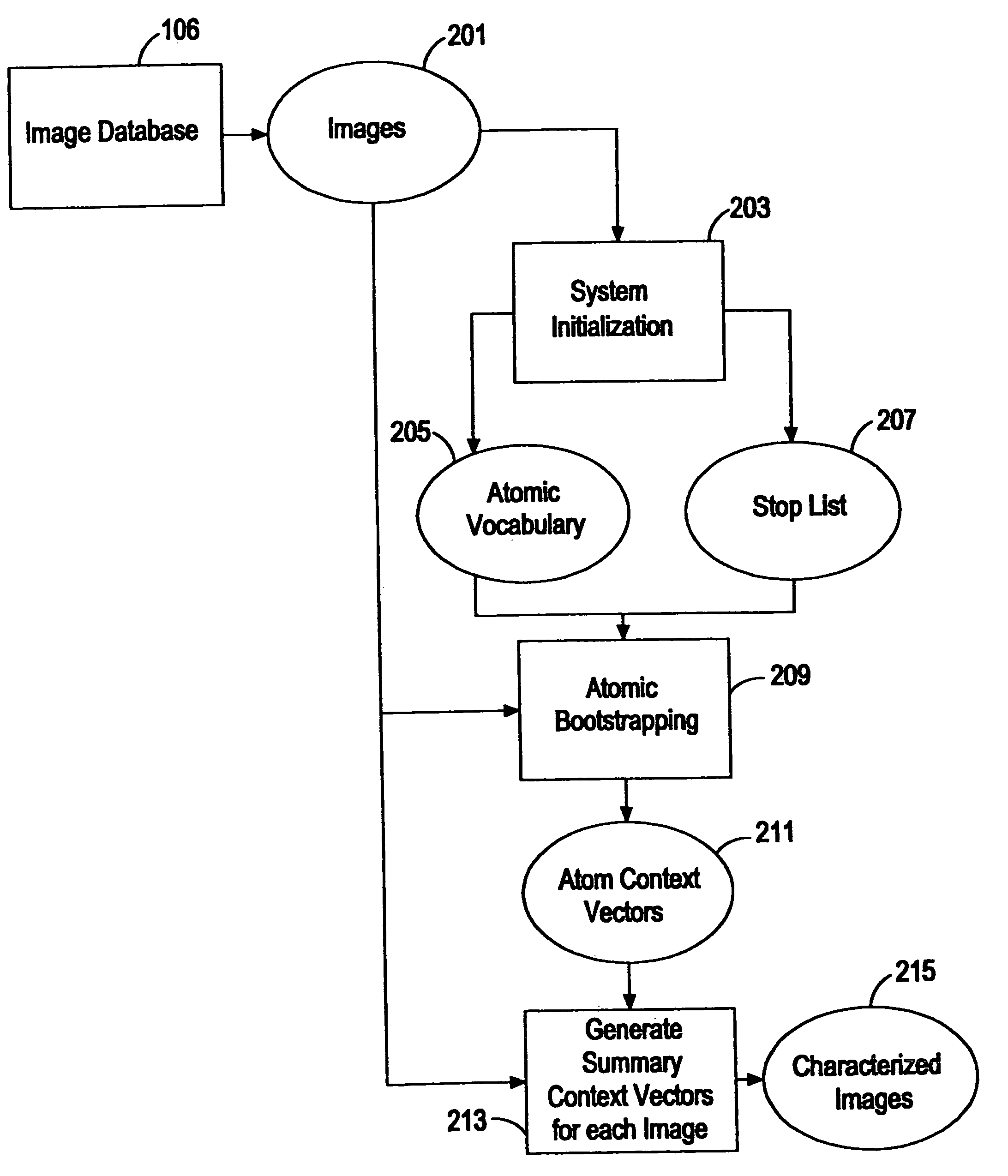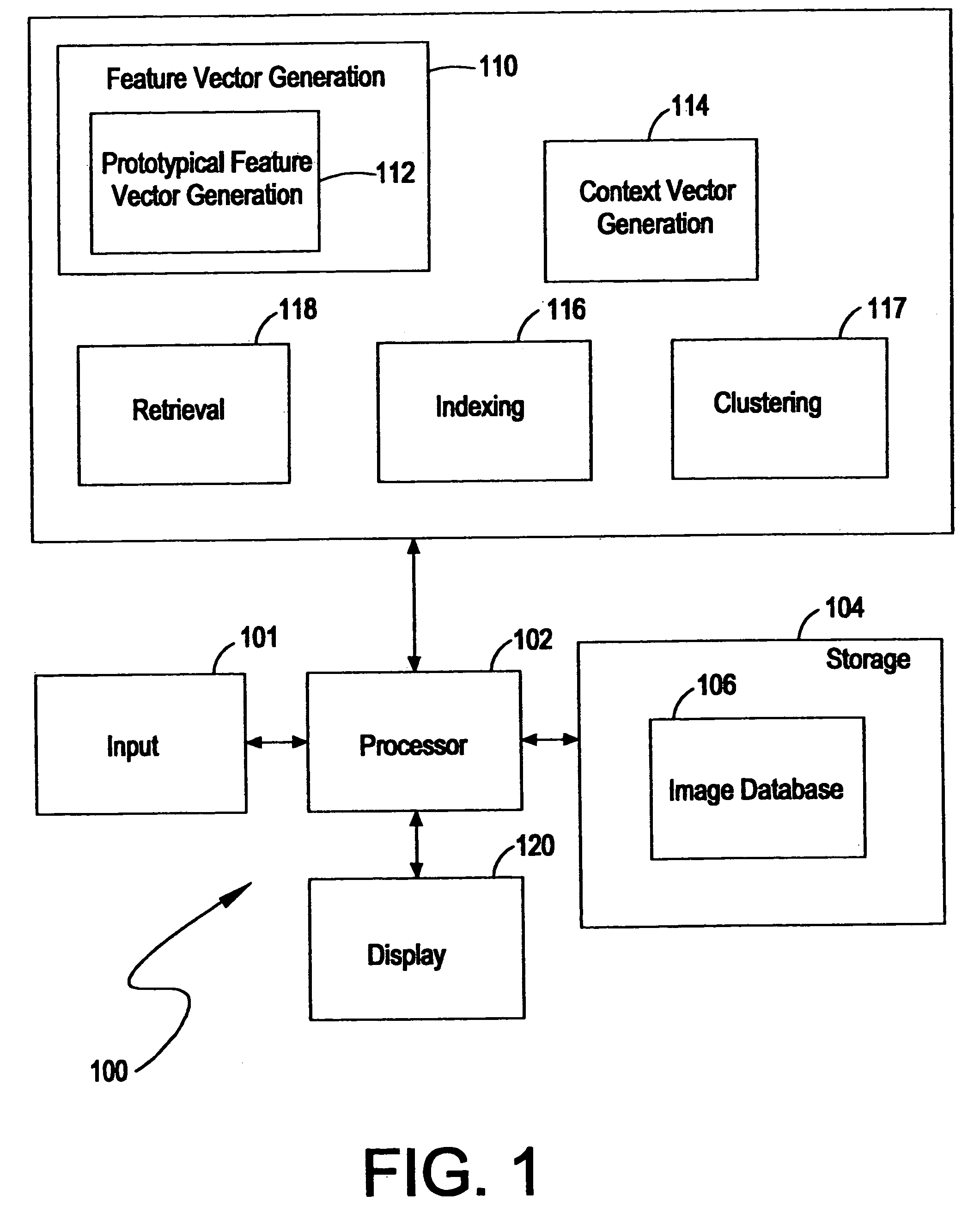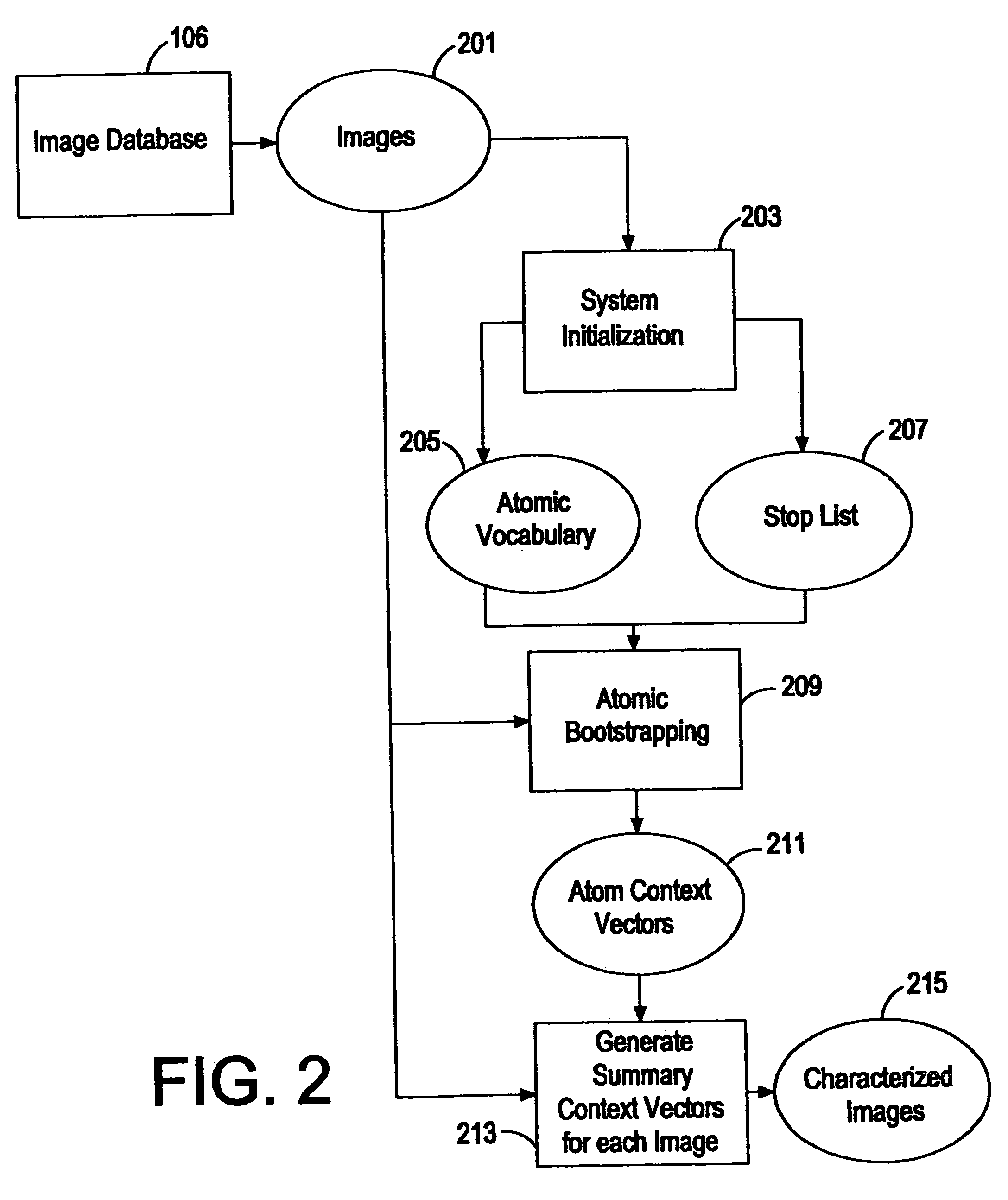Representation and retrieval of images using context vectors derived from image information elements
a technology of image information elements and context vectors, applied in the field of image data storage, indexing and retrieval, can solve the problems of impractical amount of information to obtain and store, 5 billion images, time-consuming and costly operations,
- Summary
- Abstract
- Description
- Claims
- Application Information
AI Technical Summary
Benefits of technology
Problems solved by technology
Method used
Image
Examples
Embodiment Construction
[0036]FIG. 1 shows a block diagram of software and hardware components for implementing one embodiment of the present invention 100. Processor 102 is a conventional engineering workstation or other computer processor and may also be coupled to other processors accessible over conventional communications channels or buses (not shown). Processor 102 is conventionally coupled to storage 104 which may be a magnetic disk storage, a CD storage unit, or other conventional computer data storage unit. Storage 104 may also be coupled to other storage units accessible over conventional communications channels or buses (not shown). Storage 104 includes image database 106. Image database 106 contains images in electronic or computer-readable form. Images may be discreet images, video, or temporally related images, e.g., motion picture frames.
[0037]Processor 102 is also conventionally coupled to memory 108 which is a random access memory (RAM) unit or other conventional computer memory. Items in ...
PUM
 Login to View More
Login to View More Abstract
Description
Claims
Application Information
 Login to View More
Login to View More - R&D
- Intellectual Property
- Life Sciences
- Materials
- Tech Scout
- Unparalleled Data Quality
- Higher Quality Content
- 60% Fewer Hallucinations
Browse by: Latest US Patents, China's latest patents, Technical Efficacy Thesaurus, Application Domain, Technology Topic, Popular Technical Reports.
© 2025 PatSnap. All rights reserved.Legal|Privacy policy|Modern Slavery Act Transparency Statement|Sitemap|About US| Contact US: help@patsnap.com



